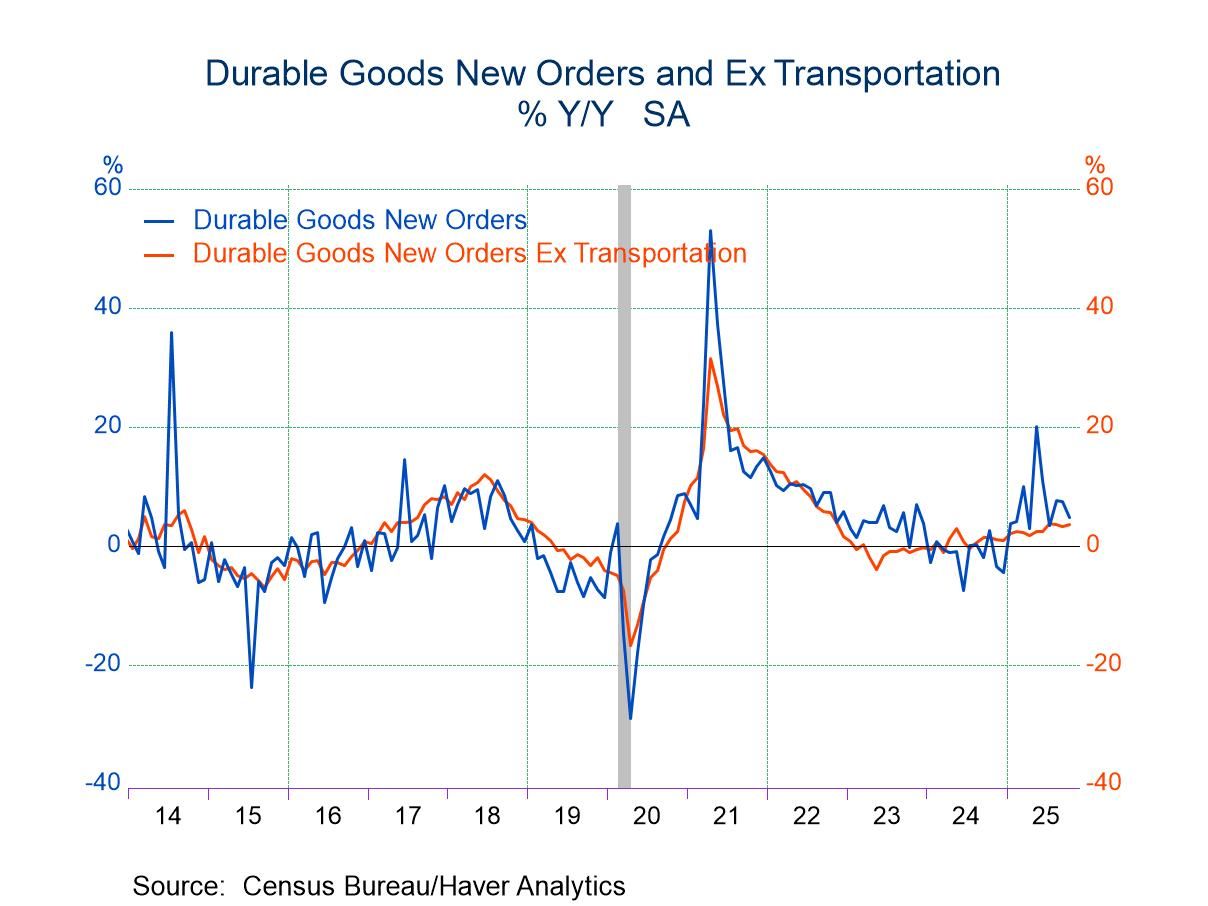U.S. Current Account Deficit Narrowed in Q3
by:Sandy Batten
|in:Economy in Brief
Summary
- Deficit more than $16 billion smaller in Q3 due mostly to a narrowing of the goods deficit.
- Services surplus widened modestly while primary income surplus narrowed.
- The overall deficit narrowed to 2.9% of GDP, the lowest since Q1 2020, from 3.2% in Q2.


The U.S. current account deficit narrowed a little less than expected in Q2 2023 to $200.3 billion from an upwardly revised $216.8 billion in Q2 (previously -$212.1 billion). The Q3 deficit, while still sizable, was the smallest one since $200.2 billion in Q2 2021. The Action Economics Forecast Survey expected the deficit to have narrowed to $196.5 billion in Q3. As a percentage of GDP, the deficit fell to 2.9%, the lowest since Q1 2021, from 3.2%.
Most of the narrowing in the overall deficit in Q3 reflected a $14.5 billion narrowing of the goods trade deficit to $261.0 billion from $275.5 billion. Exports of goods were up 3.8% q/q, outpacing a 0.6% q/q rise in imports of goods. The rise in goods exports was led by autos (+8.5% q/q) and consumer goods ex autos (+4.5% q/q). The services surplus widened $4.5 billion in Q3 to $76.2 billion from $71.7 billion. Services exports increased 1.1% q/q while services imports fell 1.0% q/q.
The primary income surplus slipped $2.2 billion to $30.0 billion in Q3. A 3.4% q/q increase in receipts was more than offset by a 4.4% q/q gain in payments. This position primarily reflects income earned on foreign assets versus U.S. payments to foreign holders of U.S. assets. The secondary income deficit was little changed at -$45.6 billion. These payments and receipts include items such as insurance, fines, taxes, and personal transfer payments.
On the capital flow side of the ledger, the net U.S. acquisition of foreign financial assets excluding derivatives increased to $323.4 billion in Q3 from $201.9 billion in Q3. The quarterly increase mostly reflected increased loans to foreigners. Net foreign holdings of U.S. assets (the net incurrence of liabilities) increased $125 5 billion to $463.0 billion in Q3. The Q3 increase was more than accounted for by a $297.2 billion rise in lending by foreigners. Net gains in both direct and portfolio investment abroad declined in Q3.
Balance of Payments data are in Haver’s USINT database, with summaries available in USECON. The expectations figure is in the AS1REPNA database.


Sandy Batten
AuthorMore in Author Profile »Sandy Batten has more than 30 years of experience analyzing industrial economies and financial markets and a wide range of experience across the financial services sector, government, and academia. Before joining Haver Analytics, Sandy was a Vice President and Senior Economist at Citibank; Senior Credit Market Analyst at CDC Investment Management, Managing Director at Bear Stearns, and Executive Director at JPMorgan. In 2008, Sandy was named the most accurate US forecaster by the National Association for Business Economics. He is a member of the New York Forecasters Club, NABE, and the American Economic Association. Prior to his time in the financial services sector, Sandy was a Research Officer at the Federal Reserve Bank of St. Louis, Senior Staff Economist on the President’s Council of Economic Advisors, Deputy Assistant Secretary for Economic Policy at the US Treasury, and Economist at the International Monetary Fund. Sandy has taught economics at St. Louis University, Denison University, and Muskingun College. He has published numerous peer-reviewed articles in a wide range of academic publications. He has a B.A. in economics from the University of Richmond and a M.A. and Ph.D. in economics from The Ohio State University.






